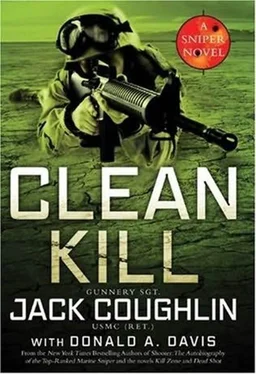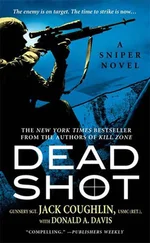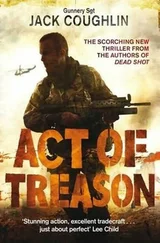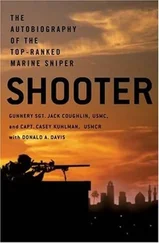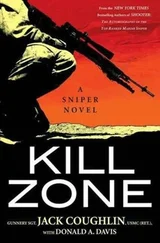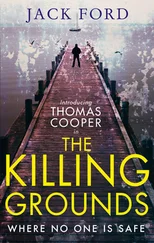Swanson roughly awakened the youngster, jerked him to his feet and gave him a push. Sticking to the darker patches, Kyle soon found the service road that looped around the edge of the city to a side gate of the base. He slowed, moving cautiously until he closed to within a kilometer of the mesh steel fence that was topped with concertina wire. Despite being able to hear the gunfire back at the foreign compound and knowing an ambush was waiting at the front gate, Swanson did not hurry, adhering firmly to his own prime rule: Slow is smooth, smooth is fast. He shoved the prisoner to the ground, sat on the young man’s back and took time to study the target through the Cyclops. Careful surveillance was seldom time wasted.
On its surface, the base had the primary purpose of supplying a guard force of several hundred men to protect the oil production, storage and shipment apparatus in the area. As part of that assignment, it supposedly maintained a contingent of antiaircraft missiles that could spread the protective umbrella out beyond the rigs. It was reasonable to assume that it was all part of the same package, but Swanson tried never to assume anything.
Remembering the map in the Boykin Group basement, he knew the base was sliced into four equal parts. A perimeter road followed all the way around inside the fence line. A north-south road ran from the main gate to the far side of the camp, dead-ending at the fence. It was bisected in the middle by an east-west route which emptied onto the supply road where Swanson waited. The headquarters building was in the middle: a standard military layout, there was genius in its simplicity. Everyone could get anywhere smoothly.
Soldiers and vehicles were surging toward the front of the compound, with troops running from the living quarters located in the uppermost left hand corner. Several Humvees tore out of the motor pool and equipment area in the lower left quadrant and gunners were already standing in the vehicles behind machine guns. Officers coming from smaller buildings in the upper right hand quarter were marrying up the troops and vehicles, putting together a rescue mission for the besieged foreigners. Swanson heard the orders being shouted and the motors revving.
So if this was an AA base, where were the antiaircraft missile sites? It would have been logical to have them in protected hard stands with open fields of fire all around, probably near the corners to eliminate obstructions. Instead, he found the missiles nestled near a long, narrow building in the area closest to him. A group of three Humvees sat in a line, the lead one decked out with aerials, which denoted the command and operations vehicle. The next two Humvees had bulky pedestals on the rear deck, where gunners would sit between reloadable pods of heat-seeking Stinger missiles. The group presented a genuine threat against any marauding helicopters or low-flying planes. They remained idle tonight because they were not needed in the coming urban fight.
Swanson thought for a moment, then spoke in Arabic to his prisoner. “Junior, here’s a free scout-sniper lesson for your future military career: More important than just seeing something is to know what you’re looking at. The only reason for having those missiles on wheels is to move them somewhere. Let’s go look inside that building.”
N O BULLETS WERE COMINGhis way, so Fatehi Awwad knew he had not been seen crouching beside the culvert. He sighted his RPG launcher on the main road coming out of the base and patiently waited for his enemies to play their part. The crossbar arm at the guard shack was being raised and four Humvees were ready to move out in column, their big engines rumbling and the huge tires crunching on the road. As the first one came out, Awwad sighted on it and pressed the trigger.
An igniter exploded a ball of gas inside the RPG launcher and flung the pointed antipersonnel grenade from the front end of the tube while the enormous back-blast from the rear disappeared in the ditch behind him. The rocket covered the first eleven meters of flight in a tenth of a second, then automatically armed itself. Stabilizer fins popped out. A fuse kicked in the propulsion system, and the Russian-made grenade increased to 294 meters per second, with a clockwise spin. Designed to penetrate armor, it easily bored into the Humvee and exploded with full fury inside.
The explosion tore the lead vehicle apart and killed four soldiers. The wrecked and burning Humvee plugged the gateway, stopping the convoy before it started. Soldiers opened fire, shooting blindly beyond the edge of the lights, but hitting nothing. The Egyptian terrorist threw down the empty launcher tube and ran.
T HE ARMY BASE HADnot been designed to repel any real attack, so the surprise was total. Years of routine patrol duty had dulled a low sense of military readiness and the soldiers, with no combat discipline, were stressing out, fixated on whatever was in front of them and running toward the burning Humvee. The antiaircraft missiles were left unguarded.
Swanson knew that if he did not stop the RPG attack, Saudi soldiers would be killed and the relief column would be delayed in reaching the besieged foreign compound to battle the rebels in the city. Still, it was a sound tactical decision, for this was not about who got hurt, but the sacrifice of a few to be measured against the greater good. The presence of a tactical nuclear missile easily trumped the lives of a few individuals. He would take that opportunity first and worry about the decision process some other time. To overthink the situation would only muddle what needed to be done. He went forward, dragging his prisoner along.
T O MAKE OPERATIONS ONthe military base simple, a pattern had matured over the years. Everything from supplies to people alike was funneled through the primary entrance and exit. The secondary gate had fallen into disuse and was secured by nothing more than a big padlock on a chain. Swanson found no fresh tire tracks to indicate recent use.
He shoved Salid to the ground about six feet from the unused gate, beside some scrub brush next to the fence. Using a set of Homer Boykin’s bolt-cutters, Kyle chose a link about three inches above the ground and snipped it, then did the next link and kept going until he had opened a gap about eighteen inches square, held in place by the links at the top. He pushed Junior through the open flap in the wire, crawled through himself and folded the fence back into place. The opening would not be noticed by a casual observer. Any guard would know that the secondary gate was supposed to be chained and locked, and would see exactly that, since the chain and lock were right where they were supposed to be. The nearby fence would not even be inspected.
Swanson led the captured man like a puppy on a leash and went to the side of the long, low building, stopping in the deep shadow of the wall. He wrapped some duct tape around his prisoner’s legs to immobilize him. “Stay, Junior,” he said in Arabic, pointing a finger at him. The young man nodded. He had no idea who this man was, but they were in the middle of an enemy military camp, so there was no escape anyway. Any noise would serve only to alert Saudi soldiers who would kill him.
The front of the building had two large doors in sections that would roll up and out of the way at the touch of a button. A regular door stood between them. The big doors were down but the smaller was open and a long, thin bar of startlingly bright light spilled outside. Kyle hugged the wall as he moved in from the left. When he reached the portal, he leaned forward and listened for any sound that would indicate someone was moving inside. Swanson slid an eye around the edge. No movement. Safe.
Читать дальше
